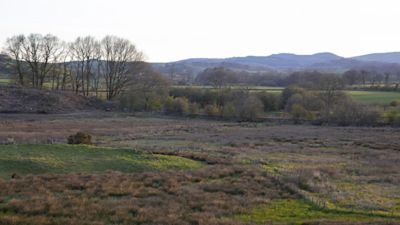Conservationists to 'rewild' 200 acres in Scotland over the next century

Conservationists have revealed an ambitious 100-year project to restore wetlands and native woodland to a large chunk of land in Dumfries and Galloway.
The National Trust for Scotland said over the next century it will transform 200 acres of countryside at Kelton Mains, on the trust's Threave Estate, boosting biodiversity and allowing different species to flourish.
The first steps in the Threave Landscape Restoration Project will see the land "undrained" as large chunks of it are a floodplain for the River Dee.
This will allow the water to "revert to more natural flow patterns" and lead to better wetlands, expanding the habitats for a wide range of native and migrant waterfowl, as well as other animals, said the conservation charity.
Another key focus will be planting and creating 74 acres of native woodland, as well as "exploring how livestock can be managed in new ways to balance agricultural production with nature recovery".
Saturday marks the International Day for Biological Diversity.
Dr Sam Gallacher, Dumfries and Galloway operation manager for the National Trust for Scotland, said researchers and experts have been probing the best methods of rewilding the area for the past four years.
He said: "Studying holistically the whole site, we have put together both an immediate and long-term plan to help kickstart and support natural processes, but also use this site as a massive experiment to help us find best practice and methods that we hope will be useful and inspire others in similar settings whether in Scotland or further afield.
Funding for the project comes from the Galloway Glens Landscape Partnership Scheme and the National Lottery Heritage Fund.
Politicians were recently urged to seize the social and economic benefits that would come with making Scotland the world's first "rewilding nation".
The Scottish Rewilding Alliance called for parties to commit to policies such as rewilding 30% of public land as well as reintroducing key species to Scotland.
This includes re-homing beavers, as well as considering a pilot project to reintroduce the Eurasian lynx to Scotland, where there is both a suitable habitat for the creatures and local support.